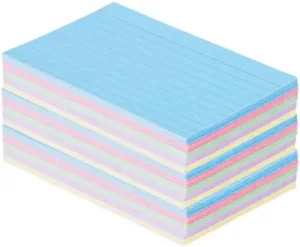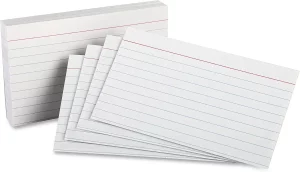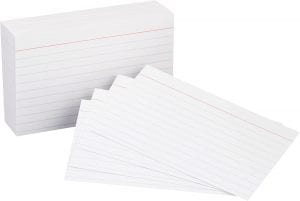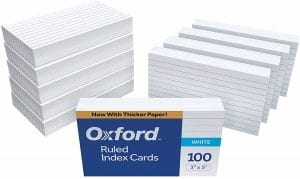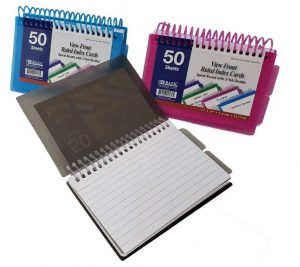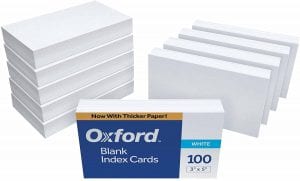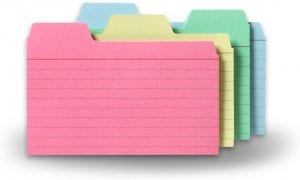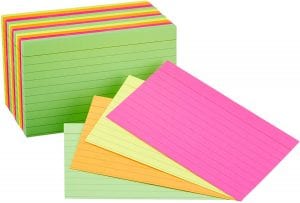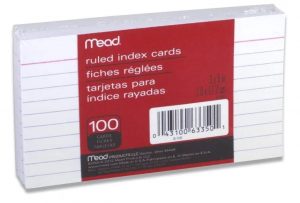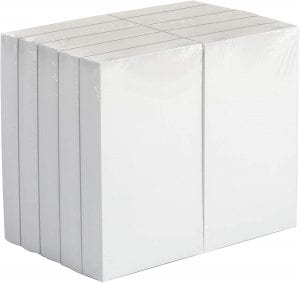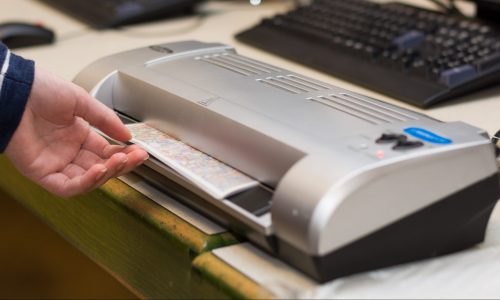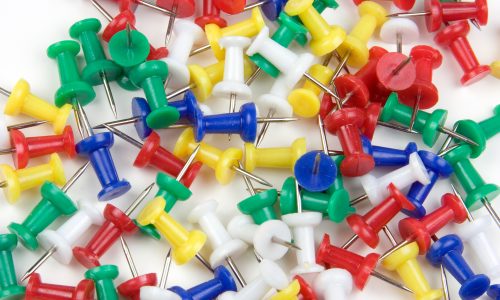The Best 3 x 5 Index Cards
We looked at the top 10 3 x 5 Index Cards and dug through the reviews from 4 of the most popular review sites including and more. The result is a ranking of the best 3 x 5 Index Cards.
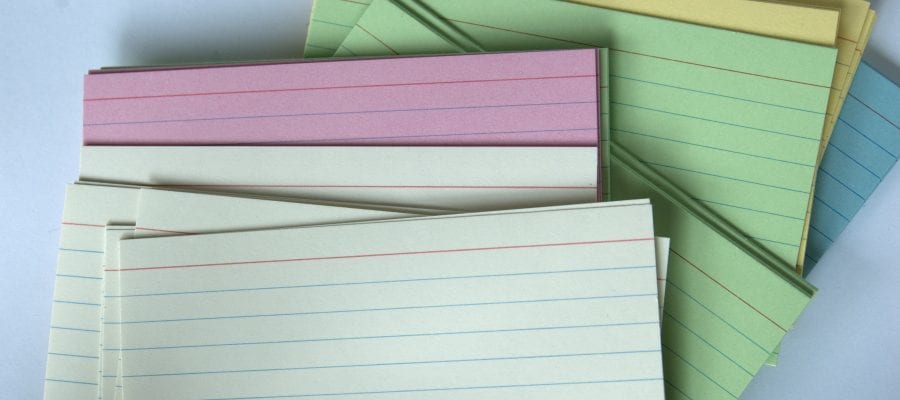
Our Review Process
Don't Waste Your Money is focused on helping you make the best purchasing decision. Our team of experts spends hundreds of hours analyzing, testing, and researching products so you don't have to. Learn more.
Our Picks For The Top 3 x 5 Index Cards
- 1. 1InTheOffice Sustainable School 3 x 5 Index Cards, 300-Count
- 2. 975 Supply Classic Organizing 3 x 5 Index Cards, 100-Count
- 3. AmazonBasics Classroom Weighted 3 x 5 Index Cards, 100-Count
- 4. Oxford School Ruled 3 x 5 Index Cards, 1,000-Count
- 5. B BAZIC PRODUCTS Plain Back Spiral Bound 3 x 5 Index Cards, 300-Count
- 6. Oxford Premium-Weight Blank Index 3 x 5 Cards, 1,000-Count
- 7. Find-It Tabbed Multi-Colored 3 x 5 Index Cards, 48-Count
- 8. AmazonBasics Color-Coded 3 x 5 Index Flash Cards, 300-Count
- 9. Mead Organizing Ruled 3 x 5 Index Cards, 600-Count
- 10. AmazonBasics Blank Office 3 x 5 Index Cards, 1000-Count
Skip the boring white options and go with this pastel 3 x 5 index cards set. The 300 included cards are divided up into five fun colors: cherry, salmon, blue, canary and green. Students can assign a color to each of their school subjects to stay neat and organized throughout the school year.
5 Colors Per SetThese 3 x 5 index cards are made using recycled paper, so you can feel good about your purchase.
Whether you're taking notes, planning a speech or completing an art project, these 3 x 5 index cards are sure to come in handy. They're made using thick commercial stock paper, so you don't have to worry about markers bleeding through to the other side. While the back of each card is blank, the front features ruled lines.
Traditional DesignWith this 3 x 5 index cards set, you'll receive a total of 300 cards.
These 3 x 5 index cards are made out of high-quality heavy commercial paper stock so they are durable. The ruled side is perfect for studying, making lists and taking notes. The blank side can be used to doodle or make diagrams.
Ruled on One SideIt’s easy to take notes with these heavy-weight ruled index cards.
These premium-weight index cards come in 10 packs of 100 cards each. They are ruled on one side for easy note taking. The portable 3 by 5 size is easy to take anywhere.
Stock Up for Home, School or WorkThis set includes plenty of 3 x 5 index cards so you’ll be prepared for any project.
Buying Guide
An index card, sometimes referred to as a record card or system card, is a small but handy piece of stationery. Typically measuring 3 inches by 5 inches, an index card is made out of card stock or heavy and durable paper. Their main purpose is for recording and storing small amounts of information and data. While they can be used individually, using index cards as a set is also quite useful. They provide an excellent way to organize and separate large amounts of data.
While most index cards in North America measure 3 inches by 5 inches, they can also be found in four by 6-inch and 5 by 8-inch sizes. The cards are typically white but are also sometimes available in pastel or neon colors. Most index cards contain ruled lines, but they can also be found in blank or grid styles. While index cards are typically rectangles, you can also get ones with protruding tabs at the top, which help to organize a set of cards.
There are many ways to use index cards. It’s common to use them for studying complex information or conducting research. You can write specific data on each card and organize them by topic or subject. Often, people write a question on the front of the index card and the answer on the back to test themselves while studying. Index cards can also be used to make grocery lists, organize project notes, write family recipes and more.
Why we recommend these 3 x 5 index cards?
Products Considered
Products Analyzed
Expert Reviews Included
User Opinions Analyzed
Our experts reviewed the top 10 3 x 5 Index Cards and also dug through the reviews from 4 of the most popular review sites including and more. The result is a ranking of the best of the best 3 x 5 Index Cards.
DWYM is your trusted roduct review source. Our team reviews thousands of product reviews from the trusted top experts and combines them into one easy-to-understand score. Learn more.
The Best Bang For Your Buck
Oxford School Ruled 3 x 5 Index Cards, 1,000-Count
Key Takeawy
These premium-weight index cards come in 10 packs of 100 cards each. They are ruled on one side for easy note taking. The portable 3 by 5 size is easy to take anywhere.
What to Look For
- When you’re looking for index cards, consider how you will use them and how many you will need. If you’re planning on using them individually, such as to write grocery lists, then a small set will be enough. If you’re planning on making flashcards for studying or using them in a professional setting like a library, buying a larger pack will be more cost-effective.
- Consider whether you’ll need colored cards or plain ones. If you’re organizing information in different subjects or topics, having different colored cards can make it easy to know the category at a glance. For example, you can use pink for math, blue for science and green for English.
- Many index cards include special features like tabs. This is helpful if you’re using an index card organizer and want to separate your information into categories. You can also get index cards that are spiral bound into a small notebook. This is great for taking your data on the go because it will stay together in order.
More to Explore
The unassuming 3 by 5-inch index card has a long history. Carl Linnaeus, who is known as the father of modern taxonomy, is credited with inventing the index card while conducting research and writing his book Systema Naturae in the 1700s. He needed to classify over 12,000 animals, plants and minerals into categories and required a system to keep it all organized and easy to access. Instead of writing his research in a notebook, he preferred to write about each organism on its own piece of paper (which later became index cards). This way, it was easy to reorganize them and move items around as new categories were discovered.

